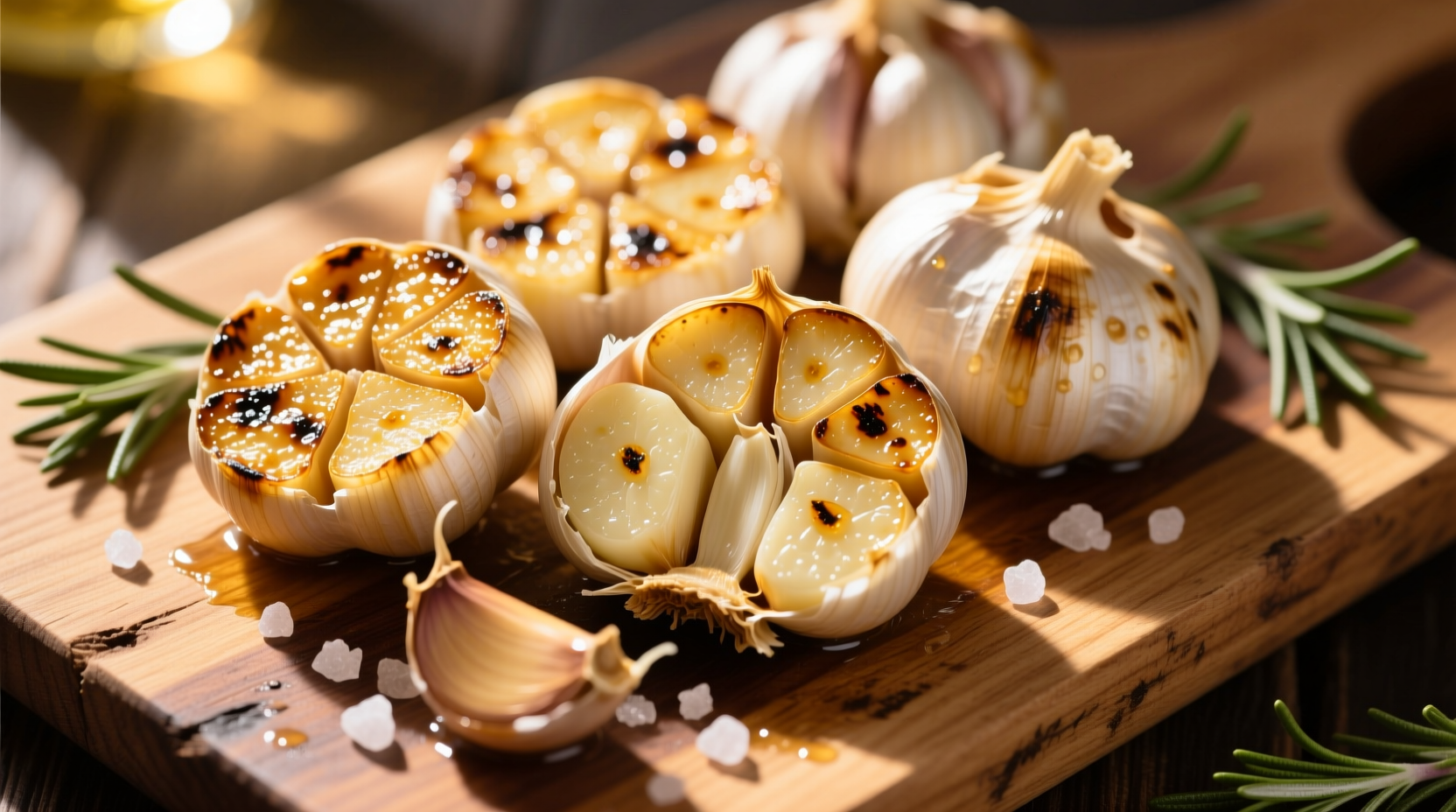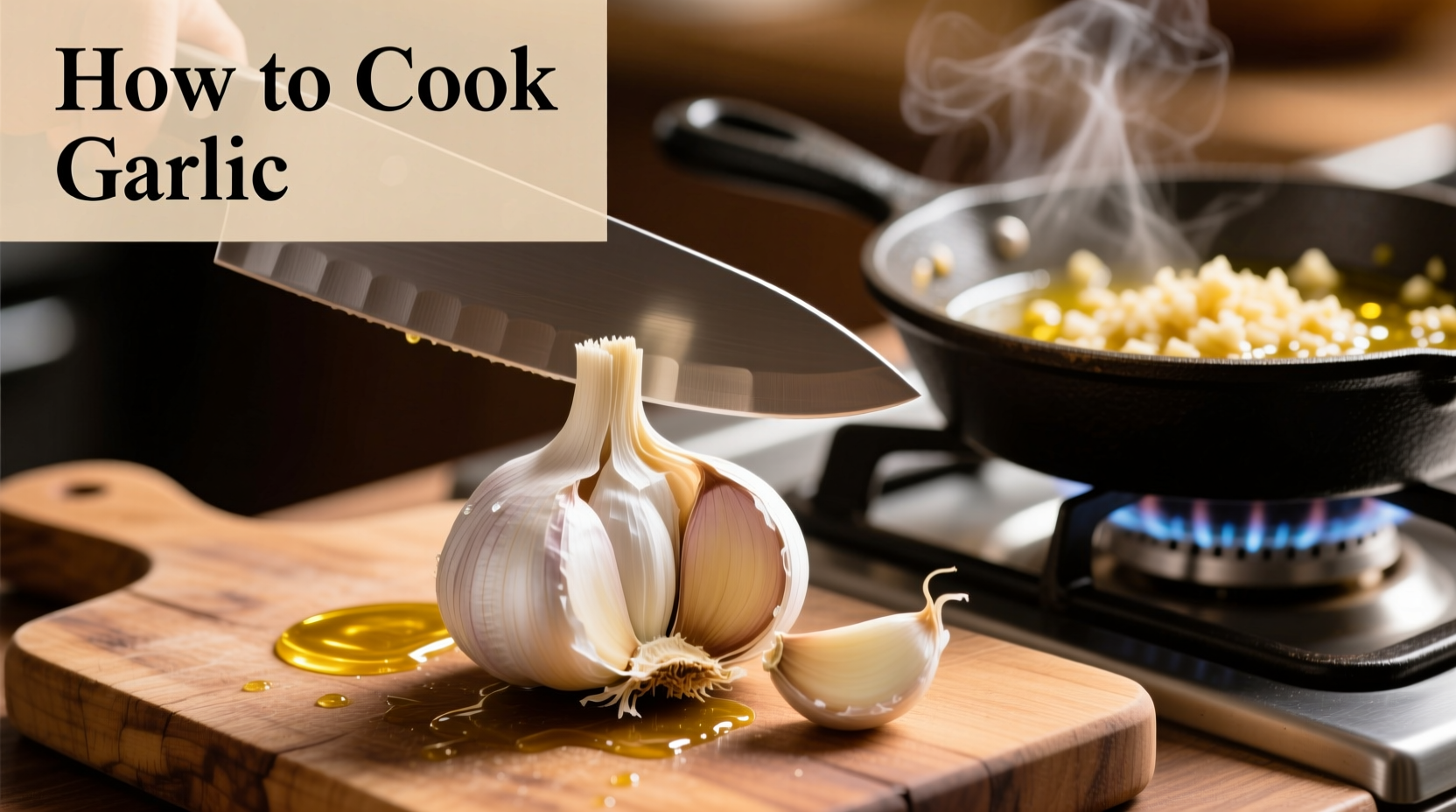The best way to cook garlic depends on your desired flavor profile. For milder, sweeter flavor: roast whole bulbs at 400°F (200°C) for 30-40 minutes. For nutty flavor in dishes: sauté minced garlic in oil for 1-2 minutes until golden. Never overcook as it turns bitter within 30 seconds past the golden stage.
Unlock restaurant-quality garlic preparation with these professional techniques that transform this humble ingredient into culinary gold. Whether you're making pasta, roasting vegetables, or creating sauces, proper garlic cooking makes the difference between good and extraordinary dishes. This guide reveals exactly how to cook garlic using multiple methods while avoiding the #1 mistake that ruins flavor in 90% of home kitchens.
Why Garlic Cooking Temperature Matters More Than You Think
Garlic contains allicin, the compound responsible for both its pungent aroma and health benefits. When raw, allicin creates that sharp bite we associate with garlic. But when heated, chemical reactions transform these compounds into more complex flavors. The USDA FoodData Central confirms that proper cooking preserves up to 70% of garlic's beneficial compounds, while burning destroys them completely and creates bitter byproducts.
| Cooking Method | Temperature Range | Flavor Profile | Best For |
|---|---|---|---|
| Raw | Room temperature | Sharp, pungent | Salsas, salad dressings |
| Sautéed | 250-300°F (120-150°C) | Nutty, aromatic | Pasta sauces, stir-fries |
| Roasted | 375-400°F (190-200°C) | Sweet, mellow | Spreads, mashed potatoes |
| Confited | 180-200°F (80-95°C) | Buttery, rich | Infused oils, braises |
The Golden Rule: Timing Your Garlic Cooking Perfectly
Professional chefs follow a precise temperature timeline that home cooks often miss. According to culinary research from the Culinary Institute of America, garlic undergoes critical flavor transformations at specific temperature thresholds:
- 122°F (50°C) - Allicin begins breaking down into diallyl disulfide (milder flavor)
- 284°F (140°C) - Maillard reaction starts creating nutty flavors
- 302°F (150°C) - Critical threshold where bitterness begins developing
- 320°F (160°C) - Rapid bitterness development (avoid at all costs)
This explains why garlic burns so quickly in hot pans. The American Chemical Society confirms that once garlic reaches 302°F, bitterness compounds form within 30 seconds. This is why the "garlic burns in 1 minute" phenomenon occurs.
Four Professional Garlic Cooking Methods (With Timing)
1. Perfect Sautéed Garlic for Pasta and Stir-Fries
This how to sauté garlic technique prevents burning while maximizing flavor:
- Start with cold oil in your pan (extra virgin olive oil works best)
- Add minced garlic (never use pre-minced jarred garlic)
- Heat over medium-low (not medium-high as many recipes suggest)
- Cook for 60-90 seconds until fragrant and lightly golden
- Immediately add liquid (pasta water, broth) to stop cooking
Pro tip: For how to roast garlic without burning in pan sauces, add a pinch of sugar to balance acidity and prevent premature browning.
2. Whole Roasted Garlic Bulbs (Restaurant-Style)
Follow these steps for sweet, spreadable roasted garlic:
- Preheat oven to 400°F (200°C)
- Cut 1/4 inch off the top of whole bulb to expose cloves
- Drizzle with 1 tsp olive oil and sprinkle with salt
- Wrap in foil with 2 tbsp water inside the packet
- Roast for 30-40 minutes until cloves are golden and soft
This method for how to cook garlic bulbs transforms them into a sweet, caramelized spread perfect for bread or mixing into mashed potatoes. The foil packet creates steam that prevents burning while allowing proper roasting.
3. Confited Garlic (Low-Temperature Infusion)
For how to cook garlic without losing nutrients while creating infused oil:
- Place peeled cloves in small saucepan
- Cover completely with olive oil
- Heat over lowest setting for 45-60 minutes until cloves turn golden
- Remove from heat and cool completely in oil
- Store cloves and oil in airtight container for up to 2 weeks
This gentle cooking method preserves more of garlic's beneficial compounds according to research published in the Journal of Agricultural and Food Chemistry. The resulting garlic is tender with a rich, buttery flavor.
4. Grilled Garlic (For Smoky Flavor)
When preparing how to cook garlic on grill for summer dishes:
- Leave bulbs whole with skins on
- Soak in water for 10 minutes to prevent burning
- Place directly on grill grates over indirect heat
- Cook for 20-25 minutes, turning occasionally
- Squeeze out soft cloves when cooled
This technique creates a unique smoky-sweet flavor profile perfect for summer vegetables and grilled meats. The skin protects the cloves from direct flame exposure.
Avoid These 3 Common Garlic Cooking Mistakes
Mistake #1: Adding Garlic to Already Hot Oil
Starting with hot oil guarantees burned garlic. Always begin with cold oil and heat gradually with the garlic in the pan. This how to prevent bitter garlic technique gives you control over the cooking process.
Mistake #2: Using Pre-Minced Jarred Garlic
Bottled garlic contains preservatives that alter flavor and often has a metallic taste. Freshly minced garlic releases enzymes that create superior flavor compounds. The difference in how to cook fresh garlic versus pre-minced is dramatic.
Mistake #3: Cooking Garlic Alone Before Adding Other Ingredients
Garlic continues cooking from residual pan heat even after removing from burner. Always add liquid or other ingredients immediately after garlic reaches golden stage to stop the cooking process.

When to Use Each Garlic Cooking Method
Understanding context boundaries helps you choose the right technique:
- Sautéed: Best for tomato-based sauces, pasta dishes, and quick vegetable preparations where you want pronounced garlic flavor
- Roasted: Ideal for spreads, dips, mashed potatoes, or when serving garlic as a side dish where mellow sweetness is desired
- Confited: Perfect for braises, stews, or when you need garlic flavor without texture (the cloves practically melt into dishes)
- Raw: Use in vinaigrettes, aiolis, or salsas where sharp pungency enhances other ingredients
For how to cook garlic for Italian dishes, sautéing works best. For French cuisine, confiting creates the subtle background flavor chefs prefer. Mediterranean dishes often benefit from roasted garlic's sweetness.
Garlic Cooking Troubleshooting Guide
My garlic keeps burning! How to fix it
Reduce heat to medium-low, start with cold oil, and cook for no more than 90 seconds. Add a splash of liquid (water, broth, or wine) immediately when garlic turns golden to stop cooking. For how to rescue burned garlic, unfortunately you must start over - the bitterness cannot be removed.
How to tell when garlic is perfectly cooked
Perfectly cooked garlic should be fragrant with a nutty aroma, light golden color, and soft texture. It should not have any dark brown spots. The cloves should feel tender when pressed with a spoon but maintain their shape.
Does cooking garlic destroy its health benefits?
Research from the American Journal of Clinical Nutrition shows that proper cooking preserves most health benefits. Roasting and confiting retain up to 70% of beneficial compounds, while burning destroys them completely. Raw garlic has the highest allicin content, but cooked garlic still offers significant health advantages.
Conclusion: Mastering Garlic Cooking Transforms Your Dishes
Understanding how to cook garlic properly unlocks its full flavor potential while avoiding the bitterness that ruins so many dishes. By controlling temperature and timing, you can create anything from sharp and pungent to sweet and mellow flavors. Remember the critical 302°F threshold where bitterness begins, and always stop cooking at the first sign of golden color. These professional techniques for how to cook garlic will elevate your everyday cooking to restaurant quality with minimal effort.











 浙公网安备
33010002000092号
浙公网安备
33010002000092号 浙B2-20120091-4
浙B2-20120091-4